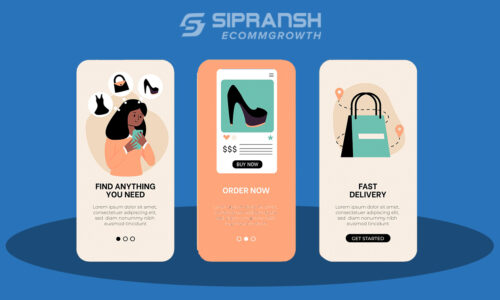
Do you know the key difference between successful brands and those that struggle? Adaptability. Keeping your finger on the pulse of the latest trends helps you stay ahead of the curve. But with things evolving so quickly, yesterday’s hot strategy might not be as relevant today. We’re here to help. Our article highlights the next big thing in digital marketing that could give your brand a serious edge. Buckle up and get ready to take your marketing strategy to the future!
Beyond AI and voice commerce, these are the emerging trends to keep an eye on
1) Conversational marketing

How would you feel if instead of filling out a boring form on a website, you have a friendly chat with a REAL HUMAN who answers your questions, recommends products, and even helps you place an order. It’d make you feel special, wouldn’t it?
Conversational marketing ditches the old-school approach of pushing messages at people. Instead, it focuses on having real conversations with the visitors on the platforms they already use, like website chat windows or messaging apps (WhatsApp or Facebook Messenger).
Here’s how it works in action: Let’s say you’re browsing an online clothing store. A friendly chat window pops up and asks if you need any help finding the perfect dress for your event. You can type a question about a specific size or style, and the chat window (powered by a REAL PERSON) can answer you right away. You won’t have to wait on hold or search for your answer through the endless FAQs.
Conversation marketing makes customers feel like they are buying in a brick and mortar store but with the convenience of online shopping.
Stats don’t lie
- According to WiFi Talents, live chat leads to a 48% increase in revenue per chat hour and a 40% increase in conversion rate.
- The same source tells that 77% of consumers won’t make a purchase if there’s no live chat available.
- And that 82% of consumers expect an immediate response from brands.
- According to Hubspot Research, 90% of respondents said an immediate response is important or very important
- According to Drift, 50.7% of businesses say they can respond quicker with conversational marketing.
How to incorporate conversation marketing in your website?
- Offer live chat. This is a classic and effective way to have real-time conversations with visitors.
- Add messaging app buttons to make it easy for visitors to connect with you on their favorite messaging apps like WhatsApp or Facebook Messenger.
- If possible, use chatbots or live chat greetings that acknowledge returning visitors and past interactions.
- Train your live chat executives to be informative and friendly. Ask them to prioritize answering questions and solving problems over making sales.
2) Interactive content

Let’s say you’d like to visit a new country. How would you feel if you could learn everything about the destination not just by reading, but by taking a virtual reality tour. That’s what interactive marketing is. It’s all about ditching the one-way street of information and creating a two-way conversation with your audience.
Interactive content makes your customers part of the experience. Instead of passively consuming information, they get to actively engage with it.
Stats don’t lie
- According to Linearity 85% of B2B marketers intend to incorporate or have already integrated interactive infographics into their content marketing strategies.
- The same source tells us that 93% of marketers concurred that interactive content is more successful at educating buyers than only 70% for static content.
- According to Rock Content, 88% of marketers say interactive content helps brands differentiate themselves
- According to Outgrow, interactive content generates 2x more conversation than static content.
How to incorporate interactive content in your website?
- Add quizzes and polls. These are fun ways to engage your audience and gather valuable data about their preferences.
- Use product configurators. Let visitors personalize products like shoes, bags, or even phone plans to fit their style.
- Embed calculators or ROI (Return on Investment) estimators. Interactive calculators can help users make informed decisions by providing estimates on things like loan payments or potential savings.
- Incorporate 360° images or videos. Show your products, services, or even your office space in a more immersive way.
- Run contests with user-generated content. Encourage user engagement by asking visitors to submit photos, videos, or stories related to your brand.
3) Micro influencer marketing

Are you still wasting your money on big influencers with millions of followers? Because that’s so 2023. 2024 is all about collaborating with micro influencers who actually care about your product.
Micro-influencer marketing means partnering with regular people who have a smaller but super engaged audience. People tend to trust these micro-influencers more than big stars because they seem more down-to-earth and relatable.
So, how does it work? Let’s say you run a bakery that makes amazing cupcakes. Instead of trying to reach millions with a TV ad, you might partner with a micro-influencer who loves baking and has a loyal following of foodies. This influencer could create a post raving about your cupcakes, complete with mouthwatering photos, and share it with their audience. Since they’ve already built trust with their followers, people are more likely to be interested in trying your bakery’s treats.
Micro-influencer marketing is a great way to reach a targeted audience who might be genuinely interested in your product.
Stats don’t lie
- Micro influencers charge $100-$500 per post. Mega influencers can charge $10,000 or more per post.
- According to Spiralytics, the average conversion rate of micro influencers is 3.86% on Instagram, 1.64% on YouTube and 17.96% on TikTok. While mega influencers have a conversion rate of 1.2% on Instagram, 0.37% on YouTube and 4.96% on TikTok.
- The same source tells that 82% of customers have said that they are “highly likely” to follow a recommendation given by micro influencers.
4) Livestream shopping

At one point customers get tired of endless scrolling. Sometimes, they miss the feeling of interacting with real humans like they can in a brick and mortar store. That’s exactly why livestream shopping is the next in thing today.
Instead of scrolling through the product photos, they are watching a live show where the host is talking about a new clothing line. They try on different outfits, answer questions in real-time from viewers like “what size is that shirt?” and even offer exclusive discounts during the broadcast.
Livestream shopping happens on platforms you already use, like Instagram or YouTube. Brands partner with hosts, who could be influencers, celebrities, or even their own employees, to showcase products in a fun and engaging way.
Here’s why it’s so popular:
- Feels like real-life shopping: You get to see products being used in real-time, which can be more helpful than static photos.
- It’s interactive! You can ask questions and get answers on the spot, clearing any doubts you might have about a product.
- Special offers and deals: Livestreams often feature exclusive discounts or promotions you won’t find anywhere else.
- Convenient: Shoppers can even purchase the products directly through the livestream without ever leaving the platform!
Stats don’t lie
- According to WiFi Talents, livestream shopping events are set to drive 45 billion euros in sales in Europe by the end of 2023.
- The same source tells us that live commerce helps brands achieve up to 11 times higher return on investment compared to traditional e-commerce.
- They also pointed that 65% of businesses that use live shopping platforms indicate an increase in customer engagement.
5) Sustainability and purpose driven marketing

These days, more and more customers care about the impact their purchases have on the world. That’s why sustainability and purpose-driven marketing is so in 2024. It’s about going beyond just selling a product and showcasing how your brand makes a positive difference.
Imagine you’re looking for a new pair of sneakers. Here’s how sustainability and purpose-driven marketing might play out:
The company uses recycled materials in their shoes, reducing waste and helping the environment. Their marketing highlights this by showing the recycling process and emphasizing their commitment to sustainability.
The brand partners with a charity that supports children’s education. A portion of the proceeds from each shoe purchase goes towards the charity. The marketing campaign focuses on both the cool sneakers and the positive social impact. Sustainability and purpose-driven marketing is all about transparency and authenticity. People want to see real action, not just empty promises.
Stats don’t lie
- According to a McKinsey report, products with ESG (environmental, social, and governance) claims and sustainable marketing strategies have grown 28% over the past five years, outpacing similar products by 8%.
- An Accenture survey found that 62% of consumers consider businesses that are dedicated to sustainability and fair employment practices.
- 73% of millennials are willing to pay more for sustainable products. (Source: Google)
- 66% of consumers are willing to pay more for products from socially responsible companies. (Source: Google)
- 73% of consumers would also stand up for a purpose-driven brand if it faces negative criticism. (Source: Google)
Here are some ways companies can incorporate sustainability and purpose driven marketing:
- Highlight eco-friendly practices: This could be using recycled materials, reducing packaging waste, or having energy-efficient production facilities.
- Support social causes: Partner with charities or organizations that align with your brand’s values.
- Be transparent about your supply chain: Show customers where and how your products are made, ensuring ethical labor practices and environmental responsibility.
Don’t get left behind
While everyone’s buzzing about AI and voice assistants, these under-the-radar trends are poised to be the next big things. From interactive content that lets your audience play to livestream shopping that feels like a fun night out, these innovative strategies can take your brand engagement to a whole new level.
If you’re looking for help incorporating these trends into your brand strategy, don’t hesitate to contact the search engine marketing (SEM) experts at SIPRANSH ECOMMGROWTH, a professional Ecommerce SEO marketing agency. Our data-driven marketing approach can help you craft a marketing plan that’s both cutting-edge and effective.






